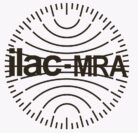A scanning electron microscope (SEM) produces images of a sample by scanning over it with a high energy beam of electrons which can be focused to a spot approximately 1 nanometer in diameter, allowing resolution limits down to about 10 nm. Here at Microanalysis we run two scanning electron microscopes, the JEOL 5800 LV and […]
View MoreXRD offers an incredibly useful tool in determining – phase composition across a whole range of applications. Our XRD capabilities are driven by a Philips X’pert x-ray diffractometer coupled with the Bruker EVA 3.1 software and ICDD PDF4 database for phase identification. We offer qualitative, semi-quantitative and fully quantitative phase analysis to suit your specific […]
View MoreOur Nikon SMZ18 has the highest zoom ratio (25:1) of any optical microscope on the market, Microanalysis can now image in the macro and micro simultaneously on the one instrument. A resolution of just a couple of microns coupled with high brightness and contrast make this microscope ideal for complimentary imaging with our state-of-the-art electron […]
View MoreMicroanalysis Australia has been assisting clients accurately determine their bulk cargo moisture limits for a decade, utilising TML flow table and protector-fagerberg techniques. Transportable Moisture Limit determination is a delicate science, which results in a report without which a ship containing bulk cargo is unable to leave port. The TML value represents a ‘safe’ moisture […]
View MoreMicroanalysis Australia is equipped with the NETZSCH STA 449 F5 Jupiter, a high-performance DSC/TGA instrument capable of simultaneous thermal analysis from room temperature up to approximately 1550 °C. For evolved gas analysis, the system is externally coupled with the MS 403 Aëolos II mass spectrometer, which operates over a mass range of 0–300 amu, enabling real-time […]
View MoreMicroanalysis has recently acquired an Agilent 7890 GC-MS (Gas Chromatogram – Mass Spectrometer) for its new premises at East Perth. A GC-MS is composed of three basics building blocks: A means of introducing the sample via an injection port. The separation of mixtures of compounds by partitioning them between a gas phase (typically helium) and […]
View MoreLaser interferometry is a particularly useful analysis, allowing for non-destructive high resolution imaging and surface topography mapping that is suitable for a wide range of samples. With scan areas up to 10cm x 10cm, surface resolutions down to 1µm, a maximum depth of field of 24mm and an axial resolution as low as 0.008µm the […]
View MoreThe instrument used is a Malvern Instruments Mastersizer MS2000. Any material present in the sample greater than 500 µm in diameter has to be manually sieved out of the sample prior to analysis by laser diffraction. This is conducted because of the limitation of the instrument to representatively suspend particles larger than this size, especially […]
View MoreThe instrument used is a Micromeritics Sedigraph 5100. For dry powders a representative 10-20g subsample is taken and dispersed in approximately 75mL of 1000ppm sodium hexametaphosphate (Calgon) using a Cole-Palmer 8851 (or equivalent) ultrasonic bath for 15 minutes. Some powders may require the addition of a wetting agent to enable full dispersion. In this instance, […]
View MoreParticle Counting is useful for finding the particle size distribution and concentration of clean liquids such as waters, diesels and other solutions. The instrument used is a HIAC ROYCO Liquid Particle Counting System 9703 and utilises light extinction to count the number and size of each particle individually. The instruments can be fitted with a […]
View MoreOur Micromeritics Multypc is an automated gas pycnometer capable of determining absolute density of a wide range of solids to near reference value accuracy following ASTM D4892. Using ideal gases such as helium, and employing Charles’ Gas Law, a reference volume can be pressurised to a known value before allowing this charge to pass into […]
View MoreOur pH meter, conductivity probe, dissolved oxygen meter and chlorine and fluorine selective electrodes allow us to measure fast and accurate acidity, fluoride and chloride content.…
View MoreOur Brookfield Viscometer is equipped with a range of spindles which can be calibrated between 10 cP to 5000 cP.
View MoreOur IKA KS4000i and Ratek OM11 temperature controlled orbital shakers are primarily home to samples for dissolution testing and corrosivity testing, which require controlled agitation and temperature.
View MoreMoisture content is conducted using a Kern MS1 moisture balance. The analysis can be performed at 50°C to ~200°C as required. The sample is heated until the weight change is less than 0.01%.
View MoreMicroanalysis performs surface area and pore structure analysis using a Belsorp BelMini BET instrument. Default test parameters use nitrogen gas at ambient laboratory conditions of 22 °C and approximately 1000 mmHg pressure, compensated for in the analysis procedure. Surface area analyses use a 5 pt isotherm, and pore structure analysis generally uses an 80 pt […]
View More





